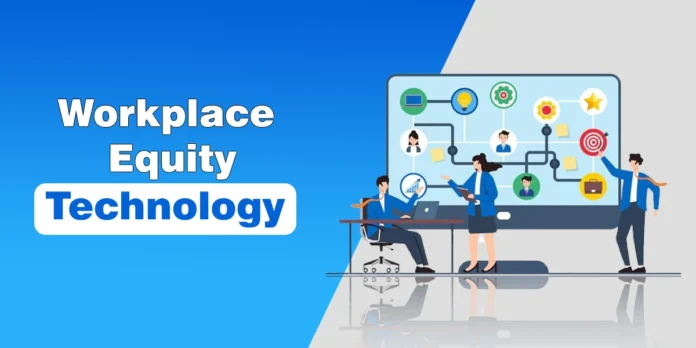Technology has made it possible for people from different regions and cultures of the world. Many studies have shown that companies with more cultural diversity in their workforce are more likely to succeed in the market. However, maintaining this diversity in modern companies is difficult.
It’s even more difficult for businesses that are spread across multiple countries and regions. That’s where Workplace Equity Technology comes in to save the day. It helps companies by analyzing and monitoring different equity aspects to ensure things keep on going smoothly. In this article, I am going to discuss everything you should know about this technology in detail. Let’s start.
What is Workplace Equity Technology?
Workplace Equity Technology is a growing tech trend consisting of tools, software, and programs used in companies to manage workforce equity and inclusion. These systems are designed to make sure companies are hiring and managing their employees from every culture and part of the world.
This technology also gives equal company rights and benefits to employees no matter what culture they belong to. Besides monitoring and assisting, this set of tools and software provide detailed analytics and reports as well. The main reason why big companies utilize such systems is to get the most out of their workforce by offering equal facilities and benefits.
Major Types of Workplace Equity Technology:
The details of the important types of Workplace Equity Technology are given below:

1. Digital Communication Systems:
The main barrier to people of different cultures while working together is communication. Workplace Equity Technology involves digital communication and collaboration tools that offer an equal chance of collaboration for every employee regardless of their languages, cultures, or ethnicities.
Many companies are using software tools like Microsoft Teams and Slack that allow people to communicate and contribute to projects easily. These tools offer useful features that allow different teams to participate and work to their fullest potential.
2. Assistive Technologies:
Assistive Technologies are pieces of technology that are designed to help employees who are not physically fit. They take care of special people with disabilities to make sure they work properly without facing any type of inconvenience.
Some of these tools let such people work independently as well. It helps them perform at their best level without any issues. There are several examples of these technologies that are being used in the market. For example, companies use screen readers like JAWS and NVIDIA to help people with visual disability to work properly.
3. HR and Recruitment Tools:
Another important factor businesses have to keep in mind while maintaining equity is HR and recruitment. So, they utilize a bunch of different tools to make sure the hiring procedure is according to the best standards.
These tools use different types of technologies including AI to streamline the hiring procedure. It monitors and identifies any types of gaps or errors involved in unfair or biased hiring. For example, tools like HireVue help the HR and recruitment department to conduct completely unbiased hiring.
4. Pay Equity and Analytic Reports:
Every employee of a company has a right to get paid according to their post and abilities regardless of their culture. To make this happen, businesses are utilizing pay equity tools to handle their paydays more efficiently. One example of such tools is Syndio which monitors paydays to ensure fair compensations and bonuses.
Besides pay, Workplace Equity Technology also helps with analytical reports. Companies need to understand whether or not every person related to the business operations is being treated equally. The analytical reports provide detailed data on all the company aspects like pay management data. Such details help companies make better policies to ensure a successful and rich workplace culture.
How Workplace Equity Technology is Beneficial?
This workplace equity technology is beneficial for the following reasons:
- It helps teams from different cultures and regions to work together properly.
- It promotes fairness and equality to build a rich company culture.
- Employing people from different cultures helps get innovative and diverse work ideas.
- These software tools allow companies to identify any unfairness or bias in the management.
- When people can work together without facing any bias, they tend to deliver more productivity for the company’s success.
Implementing Workplace Equity Technology:
Follow these guidelines to implement this technology in your company:
- First of all, understand the business’s needs and necessities. Analyze your goals for promoting equity and fairness in the company.
- Start programs to help employees understand and use the technologies easily.
- Keep on monitoring the results and try to adapt to the situation whenever necessary.
- Running training sessions for the HR department as well as general management is also necessary.
- Pick the right tools and technologies to achieve these goals. Give everyone access to these tools and technologies without any evaluation.
Conclusion:
Workplace Equity Technology is helping a lot of big companies implement equity in their workforce. It allows them to treat each employee equally and make sure they have an equal right to grow in the market. It has different types and each type is designed to help with a specific company need.
Experts first try to analyze and spot the need and then implement the technology accordingly. As a result, the businesses grow a rich culture where everyone works at their fullest potential for mutual success.
Frequently Asked Questions (FAQs):
Can small businesses use Workplace Equity Technology as well?
Yes, if these businesses have a diverse employee culture, they can use this technology for better working.
Are these tools expensive to use?
It depends on the nature of the tool. However, many of these tools have budget-friendly versions and packages as well.
Is this technology useful for remote businesses?
This technology allows remote businesses to promote equity in their remote workforce as well.

